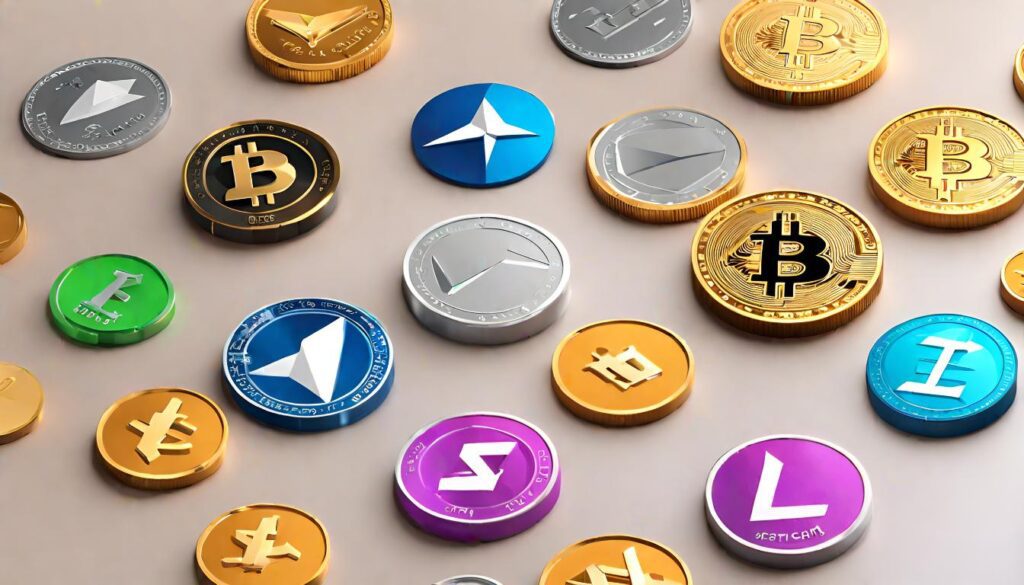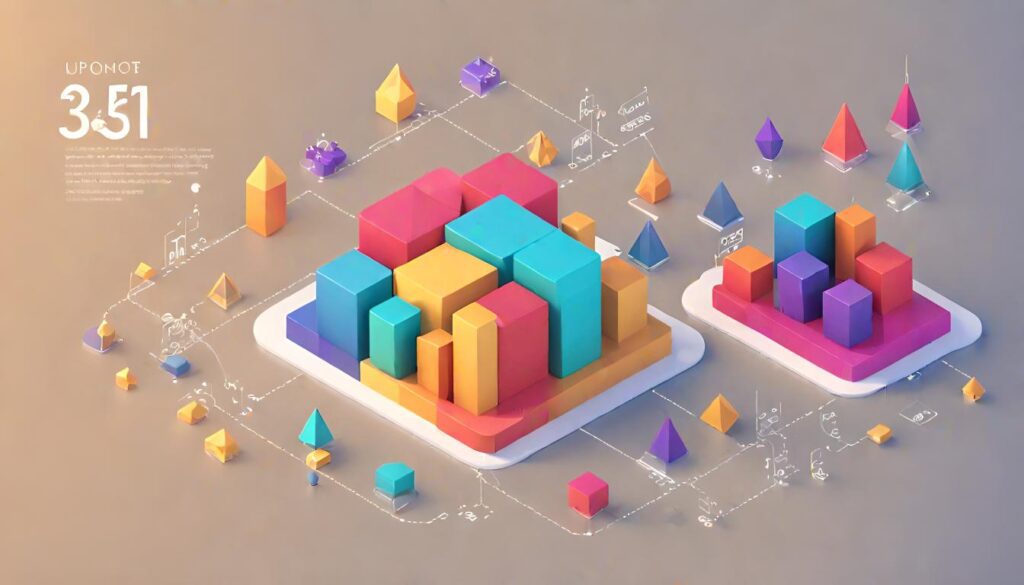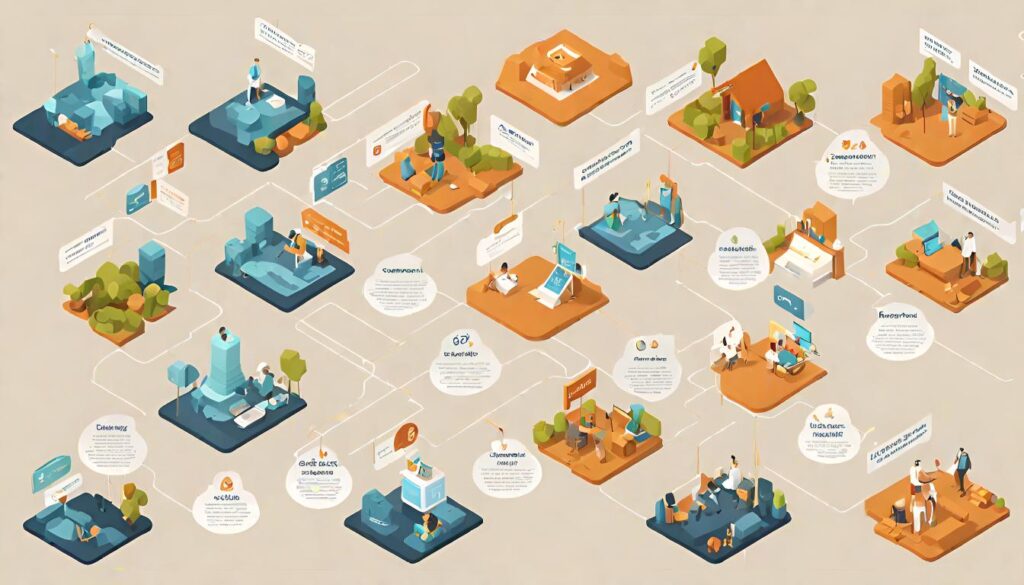Welcome to the fascinating journey through the evolution of cryptocurrency, from its humble beginnings with Bitcoin to the revolutionary emergence of decentralized finance (DeFi). In this article, we’ll explore how digital currencies have evolved over time and delve into the innovative world of DeFi.
The Genesis of Cryptocurrency with Bitcoin
The inception of cryptocurrency can be traced back to the introduction of Bitcoin by the mysterious Satoshi Nakamoto. With the release of Nakamoto whitepaper in 2008, Bitcoin paved the way for a new era of decentralized digital currency.
Online advertising service 1lx.online
Birth of Bitcoin and Early Cryptocurrencies
Satoshi Nakamoto Whitepaper and the Creation of Bitcoin
Satoshi Nakamoto whitepaper, titled “Bitcoin: A Peer-to-Peer Electronic Cash System,” outlined the fundamentals of Bitcoin and introduced the concept of blockchain technology, which underpins all cryptocurrencies.
Pioneering Cryptocurrencies (e.g., Litecoin, Namecoin)

Following the launch of Bitcoin, alternative cryptocurrencies, or altcoins, began to emerge, each offering unique features and use cases. Litecoin, often referred to as the silver to Bitcoin gold, and Namecoin, which aimed to decentralize domain name registration, were among the first altcoins to gain prominence.
Early Adoption and Challenges Faced by Cryptocurrencies
Despite initial skepticism, cryptocurrencies gained traction among early adopters and tech enthusiasts. However, they also faced regulatory hurdles, security concerns, and scalability issues in their nascent stages.
Rise of Altcoins and Diversification
Online advertising service 1lx.online
Expansion Beyond Bitcoin: Introduction of Alternative Cryptocurrencies
As the cryptocurrency market evolved, developers introduced a wide array of altcoins, expanding beyond Bitcoin’s pioneering role. These altcoins sought to address various limitations and offer alternative solutions for decentralized finance, privacy, and smart contracts.
Diverse Use Cases and Specialized Tokens (e.g., Privacy Coins, Smart Contract Platforms)
Altcoins diversified the cryptocurrency landscape by introducing specialized tokens tailored to specific use cases. Privacy coins like Monero and Zcash aimed to enhance anonymity and fungibility, while smart contract platforms like Ethereum revolutionized decentralized application development.
Impact of Altcoins on Market Dynamics and Innovation
Online advertising service 1lx.online
The proliferation of altcoins sparked innovation and competition within the cryptocurrency market, driving technological advancements and expanding the realm of possibilities for blockchain-based applications. This diversification contributed to the democratization of finance and the decentralization of traditional financial systems.
Introduction to Decentralized Finance (DeFi)
Definition and Principles of DeFi
Decentralized finance, or DeFi, represents a paradigm shift in the financial industry, aiming to democratize access to financial services and eliminate intermediaries through blockchain technology. At its core, DeFi seeks to empower individuals with greater control over their assets and financial transactions.
Early DeFi Projects and Protocols

Early DeFi projects, such as MakerDAO and Compound, laid the foundation for the decentralized finance movement by introducing novel concepts like decentralized lending and borrowing, automated market making, and yield farming.
Vision for Decentralizing Financial Services and Systems
The vision of DeFi extends beyond individual projects to encompass a broader movement toward decentralizing financial services and systems worldwide. By leveraging blockchain technology, DeFi aims to create a more inclusive, transparent, and efficient financial ecosystem accessible to anyone with an internet connection.
Core Components of DeFi Ecosystem
Decentralized Exchanges (DEX)
Decentralized exchanges, or DEXs, facilitate peer-to-peer trading of digital assets without the need for intermediaries or centralized authorities. By operating on blockchain networks, DEXs offer greater security, privacy, and censorship resistance compared to traditional exchanges.
Lending and Borrowing Protocols
DeFi lending and borrowing protocols enable users to borrow and lend digital assets in a trustless and permissionless manner. These protocols utilize smart contracts to automate lending agreements, collateralization, and interest rate mechanisms, providing users with access to liquidity and yield opportunities.
Yield Farming and Liquidity Mining
Yield farming and liquidity mining have emerged as popular DeFi strategies for earning rewards and incentives by providing liquidity to decentralized protocols. Participants can stake their assets in liquidity pools or yield farming protocols to earn interest, governance tokens, or other rewards.
Synthetic Assets and Derivatives Platforms
DeFi platforms offer innovative solutions for creating and trading synthetic assets and derivatives, allowing users to gain exposure to traditional financial instruments like stocks, commodities, and fiat currencies without the need for intermediaries or centralized authorities.
Growth and Adoption of DeFi
Surge in Total Value Locked (TVL) in DeFi Protocols
The total value locked (TVL) in DeFi protocols has witnessed exponential growth, reaching billions of dollars as users flock to decentralized platforms for lending, borrowing, trading, and earning yield on their assets.
Increasing Number of Users and Projects in the DeFi Space

The DeFi ecosystem has experienced rapid expansion, with a growing number of users, developers, and projects contributing to its development and adoption. This growth has been fueled by increasing awareness, technological advancements, and financial innovation within the DeFi space.
Impact on Traditional Finance and Banking Systems
DeFi’s disruptive potential has begun to reverberate throughout the traditional finance and banking sectors, challenging existing business models, regulatory frameworks, and market dynamics. As DeFi continues to mature, its impact on global finance is expected to become more pronounced.
Challenges and Risks in DeFi
Smart Contract Vulnerabilities and Exploits

DeFi platforms are susceptible to smart contract vulnerabilities and exploits, which can result in financial losses for users and undermine trust in the ecosystem. Auditing, testing, and security best practices are essential for mitigating these risks and ensuring the safety of decentralized protocols.
Regulatory Uncertainty and Compliance Challenges
DeFi operates in a regulatory gray area, with regulators grappling to define its legal status and jurisdictional boundaries. Regulatory uncertainty and compliance challenges pose significant risks for DeFi projects and users, potentially stifling innovation and adoption in the long run.
Scalability Issues and Network Congestion
Scalability remains a pressing challenge for DeFi platforms, as network congestion and high gas fees can impede user experience and limit the scalability of decentralized applications. Layer 2 solutions and blockchain scaling technologies are being explored to address these scalability issues and improve the efficiency of DeFi ecosystems.
Innovations and Developments in DeFi
Layer 2 Solutions and Scalability Enhancements
Layer 2 solutions, such as sidechains and rollups, offer scalability enhancements by processing transactions off-chain or in parallel with the Ethereum mainnet. These solutions aim to alleviate network congestion and reduce transaction costs, improving the overall scalability of DeFi platforms.
Integration of Oracles for Real-World Data Feeds
DeFi platforms are increasingly integrating oracles to fetch real-world data feeds and enable smart contracts to interact with external sources of information. Oracles play a crucial role in facilitating decentralized price feeds, market data, and event triggers for various DeFi applications.
Evolution of Governance Models and Community Participation
DeFi projects are experimenting with novel governance models and community participation mechanisms to decentralize decision-making and empower stakeholders. Through decentralized governance protocols and governance tokens, users can participate in voting, proposal submission, and protocol upgrades, shaping the future direction of DeFi ecosystems.
Future Outlook for Cryptocurrency and DeFi
Continued Innovation and Experimentation in the Crypto Space
The cryptocurrency and DeFi space is ripe for continued innovation and experimentation, with developers and entrepreneurs exploring new use cases, technologies, and business models. As the industry matures, we can expect to see the emergence of groundbreaking innovations that push the boundaries of decentralized finance.
Potential Impact of Regulatory Developments on DeFi
Regulatory developments and government interventions are likely to shape the future of DeFi, as policymakers seek to establish regulatory frameworks and guidelines for decentralized finance. Striking a balance between innovation and compliance will be crucial for the sustainable growth and adoption of DeFi platforms worldwide.
Role of DeFi in Democratizing Access to Financial Services

DeFi holds the promise of democratizing access to financial services by providing inclusive, open-source solutions that empower individuals to control their assets and participate in global financial markets. As DeFi continues to evolve, it has the potential to unlock economic opportunities, foster financial inclusion, and reshape the landscape of global finance.
Conclusion
In conclusion, the evolution of cryptocurrency from Bitcoin to DeFi represents a transformative journey that has revolutionized the way we think about money, finance, and the future of technology. By tracing the origins of digital currencies and exploring the innovative world of decentralized finance, we gain valuable insights into the past, present, and future of this dynamic industry. As we embark on this revolutionary journey, let us embrace the transformative potential of DeFi and work together to build a more inclusive, transparent, and decentralized financial ecosystem for all.
Our creator. creates amazing NFT collections!
Support the editors - Bitcoin_Man (ETH) / Bitcoin_Man (TON)
Pi Network (Guide)is a new digital currency developed by Stanford PhDs with over 55 million participants worldwide. To get your Pi, follow this link https://minepi.com/Tsybko and use my username (Tsybko) as the invite code.
Binance: Use this link to sign up and get $100 free and 10% off your first months Binance Futures fees (Terms and Conditions).
Bitget: Use this link Use the Rewards Center and win up to 5027 USDT!(Review)
Bybit: Use this link (all possible discounts on commissions and bonuses up to $30,030 included) If you register through the application, then at the time of registration simply enter in the reference: WB8XZ4 - (manual)
